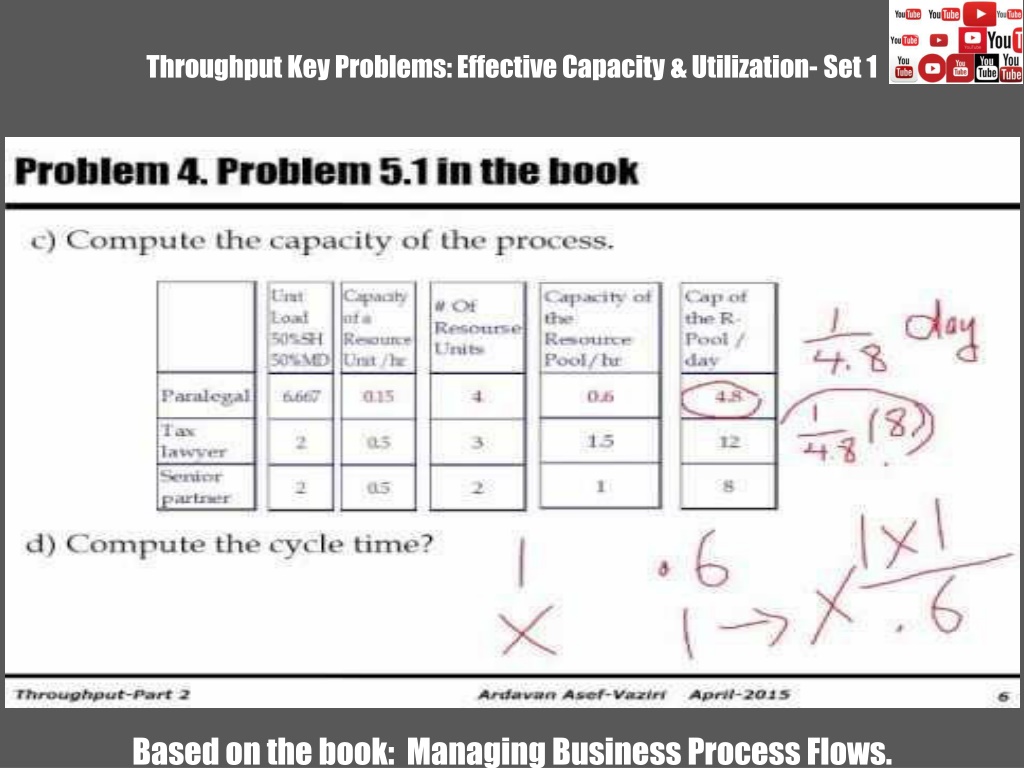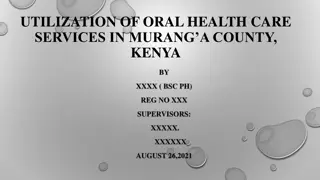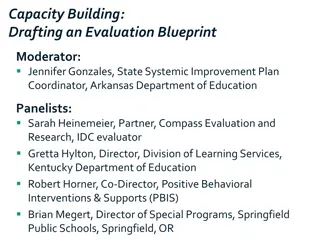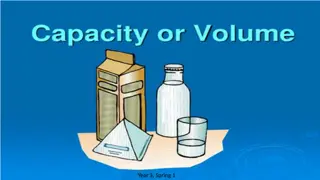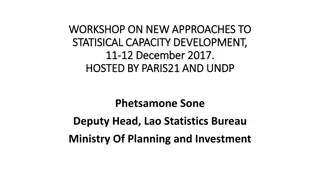Understanding Capacity and Utilization in Business Processes
This analysis focuses on the capacity and utilization of resource pools in a law firm handling contracts for shopping centers and medical complexes. It breaks down the theoretical flow time, capacity calculations for paralegals, tax lawyers, and senior partners, and the overall process capacity assessment.
Download Presentation

Please find below an Image/Link to download the presentation.
The content on the website is provided AS IS for your information and personal use only. It may not be sold, licensed, or shared on other websites without obtaining consent from the author. Download presentation by click this link. If you encounter any issues during the download, it is possible that the publisher has removed the file from their server.
E N D
Presentation Transcript
Throughput Key Problems: Effective Capacity & Utilization- Set 1 Based on the book: Managing Business Process Flows.
Problem 4. Problem 5.1 in the book A law firm processes shopping centers and medical complexes contracts. There are four Paralegals, three Tax lawyers, and two Senior partners. The unit loads of the resources to handle one standard contract is given below. Assume 8 hours per day, and 20 days per month. It takes a Paralegal 20 hours to complete 3 contract. That is 20/3 = 6.666666666666666667 hours to complete a contract. It takes a Tax lawyer 2 hours to complete a contract. It takes a Senior partner 2 hours to complete a contract. a) What is the Theoretical Flow Time of a contract? 6.667+2+2=10.667. Flow Time = Theoretical Flow Time + Waiting times Flow Time = 10.67 + Waiting times b) Compute the Capacity of each of the three Resource Pools Throughput-Part 2 Ardavan Asef-Vaziri 2
Paralegals Operation 3 Senior Partners Operation 1 Paralegals Operation 2 Tax Lawyers Tp=2 hr., c = 2 Tp=20/3 hr., c= 4 Tp=2 hr., c=3 A Paralegal can complete 1 contract in 20/3 = 6.667 hour How many contracts in one hour? 1/6.667 , or 1/(20/3) = 0.15 How many contracts all the Paralegals can complete in one hour. There are 4 Paralegals: c = 4 Four Paralegals 4(0.15) = 0.6 contracts per hours We could have also said Tp = 20/3 = 6.6667. Capacity of one resource unit is 1/Tp. Capacity of one resource unit is 1/6.667 = 0.15. Capacity of the resource units: Rp=c/Tp ; c=4 and Tp = 20/3 =6.667 Rp = 4/(20/3) = 4/6.667 = 0.6 per hour Capacity of the resource pool is 0.6 contracts per hour. It is 8(0.6) = 4.8 contracts per day Throughput-Part 2 Ardavan Asef-Vaziri 3
Tax Lawyers A Tax Lawyer can complete 1 contract in 2 hour How many contracts in one hour? 1/2 = 0.5 How many contracts all the Tax Lawyers can complete in one hour. There are 3 Tax Lawyers: c = 3 There Tax Lawyers 3(0.5) = 1.5 contracts per hours We could have also said Tp = 2. Capacity of one resource unit is 1/Tp. Capacity of one resource unit is 1/2 = 0.5. Capacity of all resource units: Rp=c/Tp where c=3 and Tp = 2 Rp = 3/2 = 1.5 per hour Capacity of the resource pool is 1.5 contracts per hour. It is 8(1.5) = 12 contracts per day Throughput-Part 2 Ardavan Asef-Vaziri 4
Senior Partners A Senior Partners can complete 1 contract in 2 hours. How many contracts in one hour? 1/2 = 0.5 How many contracts all the Senior Partners can complete in one hour. There are 2 Senior Partners: c = 2 There Senior Partners 2(0.5) = 1 contracts per hours We could have also said Tp = 2. Capacity of one resource unit is 1/Tp. Capacity of one resource unit is 1/2 = 0.5. Capacity of all resource units: Rp=c/Tp where c=2 and Tp = 2 Rp = 2/2 = 1 per hour Capacity of the resource pool is 1 contracts per hour. It is 8(1) = 8 contracts per day. Throughput-Part 2 Ardavan Asef-Vaziri 5
Problem 4. Problem 5.1 in the book c) Compute the capacity of the process. Unit Load 50%SH 50%MD Capacity of a Resource Unit /hr Capacity of the Resource Pool/hr Cap of the R- Pool / day # Of Resourse Units Paralegal 0.6 4.8 6.667 0.15 4 Tax lawyer Senior partner 1.5 12 2 0.5 3 1 8 2 0.5 2 d) Compute the cycle time? Capacity is 4.8 per day. Cycle Time = 1/Capacity Cycle Time = 1/4.8 days. That is 8(1/4.8) = 8/4.8 = 1.67 hrs. Capacity is 0.6 per hr. Cycle Time = 1/Capacity Cycle Time = 1/0.6 hrs. Cycle Time = 1.67 hrs. Throughput-Part 2 Ardavan Asef-Vaziri 6
Problem 4. Problem 5.1 in the book e) Compute the average inventory (assume U=1). Lets look at the utilization of the 3 stations Station Capacity Throughput Utilization Station 1 4.8 Station 2 12 Station 3 8 On average 1 person with a resource in Station 1, 0.4 person with a resource in Station 2, and 0.6 person with a resource in Station 3. Inventory with the processors is 1+ 0.4+0.6 = 2 On average there are 2 flow units with the processors; Inventory in the processors (Ii) 4.8 4.8 4.8 4.8/4.8 = 1 4.8/12 = 0.4 4.8/8 = 0.6 Throughput-Part 2 Ardavan Asef-Vaziri 7
Problem 4. Problem 5.1 in the book Now let s look from Little s Law point of view RT=I R= 4.8 per 8 hours or 0.6 per hour T =10.67 hours I = 0.6(10.67) = 6.4 6.4 vs 2? Where is my mistake?? 1(4)+ 0.4(3)+0.6(2) = 6.4 Suppose there are 36 contracts in process. Compute the flow time. RT=I I = 36, R= 4.8 T= 36/4.8 = 7.5 ? 7.5 days. How many contracts in the waiting lines? 36 is the total in the system. 6.4 with the processors 36-6.4 = 29.6 in the waiting lines. Throughput-Part 2 Ardavan Asef-Vaziri 8
